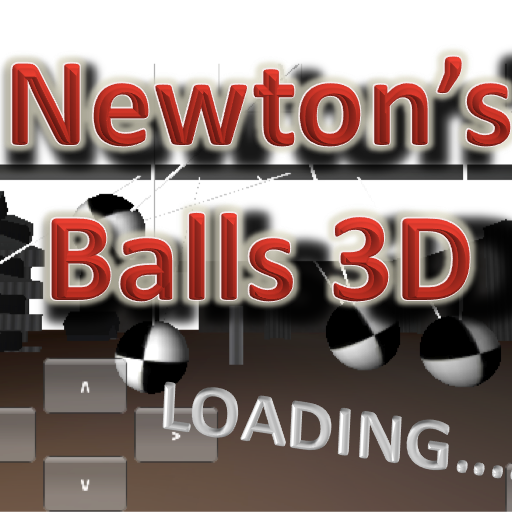Newton's Balls 3D for iPad -Free-

- Publisher: Purple Penguin.com, Inc.
- Genre: Entertainment
- Released: 6 Jan, 2011
- Size: 18.7 MB
- Price: FREE!
 Click here to request a review of this app
Click here to request a review of this app
- App Store Info
Description
Newton's cradle, named after Sir Isaac Newton, is a device that demonstrates conservation of momentum and energy.If one ball is pulled away and released, it falls and appears to come to a dead stop on hitting the other balls. The ball on the opposite side of the series appears to instantly acquire the speed of the first ball and swings in an arc that one would expect of the first ball.
The first time observer may find this visually intriguing and counter-intuitive. If a person charged into one end of a row of adjacent people then one would intuitively expect the whole row of people to be moved, rather then the last person in the row to acquire the kinetic energy.
The intermediate balls appear stationary. In fact, the cradle continues to work even if the intermediate balls are physically clamped still. This is also counter intuitive - transmitting motion without moving.
What actually happens is that the first impact produces a shock wave that propagates through the intermediate balls. A hard material such as steel is very good at doing this, where common objects like people in a bus queue are not.
In the real world, none of these processes have perfect efficiency. Energy is lost in the suspending wires, friction of the surrounding air, and sound. The last is obvious as we can hear the clicking of the balls. Toward the end of oscillation, even the intermediate balls are jiggling a bit.
Further intrigue is provided by starting more than one ball in motion. With two balls, exactly two balls on the opposite side swing out and back. While this is satisfyingly symmetrical, why could not one opposite ball swing out twice as fast, or four balls at quarter speed? Having the same number of balls swing on each side conserves both energy and momentum.
More than half the balls can be set in motion - for example 3 of 5 will result in the central ball swinging without abrupt cessation or resumption of motion.















